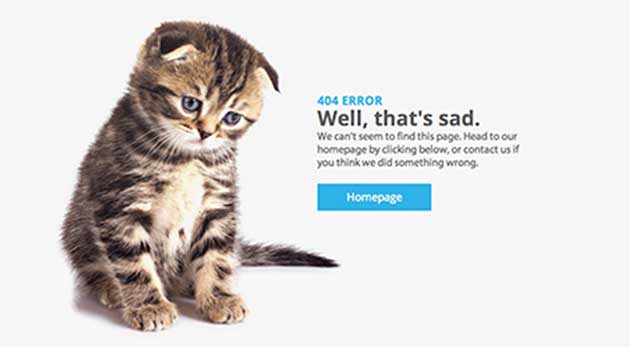Whether you're a small business marketing to local shoppers, a large organization with clients to scout out, or a fashion startup with a line of jackets to promote, building a website that draws in leads is no day at the park. It's easy to get wrong.
Luckily, a lot of the mistakes you might make have simple solutions. The following are some of the best ways to avoid some of the worst mistakes.
1. Don't get stuck in the past
A website visitor's first impression of you is based on how your site appears. If it looks outdated, users will assume that it is. For example, you should avoid color schemes that peaked in the '80s, especially bright or contrasting hues that strain the eyes.

Even if visitors survive the onslaught of color, they won't last much on the page if navigating the website is onerous. Make sure you have an easily located central menu, with a button that quietly demands to be clicked. Also, keep important information large and in charge; place it in the biggest section, closest to the top of its page (and oriented toward the left rather than the right, if it makes sense to do so).
Your logo is also of chief importance: If visitors don't see it readily displayed, they could literally forget what site they're on (awful but true). Your logo doesn't have to go in the top left-hand corner, but a spot that is just as visible would be ideal.
2. Chart your progress
Not sure you want to pay for SEO tools? Luckily, Google offers its website analytics service for free. With Google Analytics, you can track where visitors to your site come from, what they click on once they're there, how long they stay there, and so on.
Analytics is also what keeps you from making a lot of design flaws in the first place. If you can monitor how users move around your website, you'll know what mistakes made them leave, and which tactics keep them around long enough to click "Buy."
3. Have a look under the hood

Unless you went to school for programming websites, your best bet is to either hire a developer or use WordPress (or both!). Even when you set up your site with a content management system (CMS), you might be tempted to edit pages in the raw HTML. Don't. It will only lead to chaos.
Most CMS services will offer a bunch of plug-in features that cover every need you could conceivably have on your website, including customized contact forms, SEO monitors, security systems, and lots more. And many of the most popular ones are free.
4. Respond to the new wave
If desktop-only sites are the Stone Age, then mobile versions are medieval at best. Smartphone and tablet usage is climbing all the time, and users more and more are discovering websites while they're on the go. However, criticism levied against separate mobile versions of a site boils down to features lost in the conversion and time wasted managing two iterations of the same site.
Developers now use responsive design, so that your website morphs to fit any window or screen size. The responsive revolution guarantees visitors the same version on every platform, because they're all the same site, just in different sizes.
5. Create content that speaks for itself
You hope that your product or service alone will drive people to your website, but the Internet has other plans. You have to create well-made content, or no one will know your site exists in the first place. Google and other search engines are more likely to give you a boost if your stuff is elegant, interesting, and useful. That means no gimmicks or rush jobs.
Pick topics for your website and blog that will fascinate visitors, even the ones who aren't (yet) interested in your business. Comb through your content for grammar mistakes and typos, and edit like it's your job (maybe it is). Frequently updated blogs and landing pages are key to driving traffic up.
6. Social media is your friend
![]()
No website is an island. The Internet is a massive community, and the lines of communication all come together via social media. Upload your videos on YouTube, break news on Twitter, and build a fan page on Facebook. Local businesses can link their website to Foursquare. Startups can garner interest via Google+. The more social media services you join, the more opportunities for driving traffic to your site.
Maybe some social sites come and go, but connecting to one another is age-old behavior. So set up accounts on social sites, link to them from your website—and to your website from them—and synchronize your info, messages, and content to maximize impact.
7. Conversions are the goal, not the entire game
Don't get bogged down with or discourage by conversion numbers—especially as you start. Yes, you need conversions to continue growing as a business or a website, but small victories pave the road to success. With every blog post you write, plug-in you install, product you upload to the sales page, or article you maneuver onto a third-party site or blog, the higher your SEO rank goes up. That means greater brand awareness, more followers, a larger Web presence, and more feedback on how to continue improving your site.
Focus on pulling off the small stuff with some pizzazz, and the big stuff will turn out even better.




